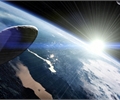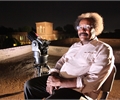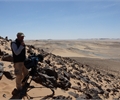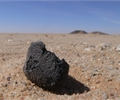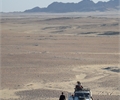Asteroid Impact
On 6th October 2008, for the first time in history, scientists detected an asteroid on a collision course with Earth. As they struggled to determine where and when it would hit, they realised it was heading for Sudan in North Africa – and would arrive just twenty hours after it was first spotted. Further calculations revealed the asteroid was small – but no one knew what to expect, and warnings went out around the world.
In the event the object, by now known as TC3, exploded at a height of 37km with the force of a small atomic bomb. Travellers in the Sudanese desert thought they were under attack, but no one was hurt. For the scientific community, however, this was just the beginning. They knew this was a unique opportunity: if they could find fragments of the asteroid they could relate its appearance in space to the material it was made of. This would allow the composition of other asteroids to be predicted from their appearance – which could be vital in defending ourselves against a future asteroid threat.
Dr Peter Jenniskens, an asteroid expert from the SETI Institute and NASA Ames, immediately set about organising an expedition with the astronomy professor from Khartoum University, Dr Muawia Shaddad. Together with 50 of his students they journeyed into the desert and combed the impact zone, forming a human chain half a mile long, searching for pieces of the fragmented asteroid called meteorites. In total, 280 meteorites were found, some of which were shipped to the US. There detailed analysis of the fragments succeeded in identifying the type of asteroid, and even where it came from in the solar system. This highlighted the threat posed by its bigger brothers still orbiting in space – and the need to watch closely for when their orbits might change.
Shot in HD. Distributor: Indigo Film and TV

